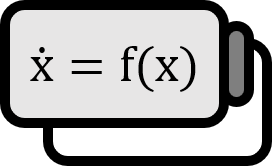Population Balance Equation
Definition 1
Let’s denote the population at time $t$ as $P_{t}$. The population born from time $t$ to the next time point $(t+1)$ as $B_{t}$, the population that dies as $D_{t}$, the population of immigrants as $I_{t}$, and the population of emigrants as $E_{t}$. Then, the following equation is called the Demographic balancing Equation. $$ P_{t+1} = P_{t} + B_{t} - D_{t} + I_{t} - E_{t} $$ Here, $\left( B_{t} - D_{t} \right)$ is referred to as Natural Growth, and $\left( I_{t} - E_{t} \right)$ as Net Migration.
Description
The Demographic balancing Equation is the most commonly considered mathematical approach for making Population Projections, and it describes changes in the population through births, deaths, and migration.
Cohort Component Method 2
In Demographics, a Cohort is a group that statistically shares the same characteristics, for example, ‘women in their 20s living in Seoul’. In human societies, there are usually differences in birth rates, death rates, and migration rates based on region, age, and gender, so the terms forming the demographic balancing equation are determined variably.
https://www.oxfordreference.com/display/10.1093/oi/authority.20110803095709792;jsessionid=94D4A6B7319F8C8DEE9E1BE6E79AA509 ↩︎
최현정. (2019). 읍면동 단위 장래인구 추정모형 개발에 관한 연구. https://doi.org/10.30902/jrea.2019.5.3.67 ↩︎
